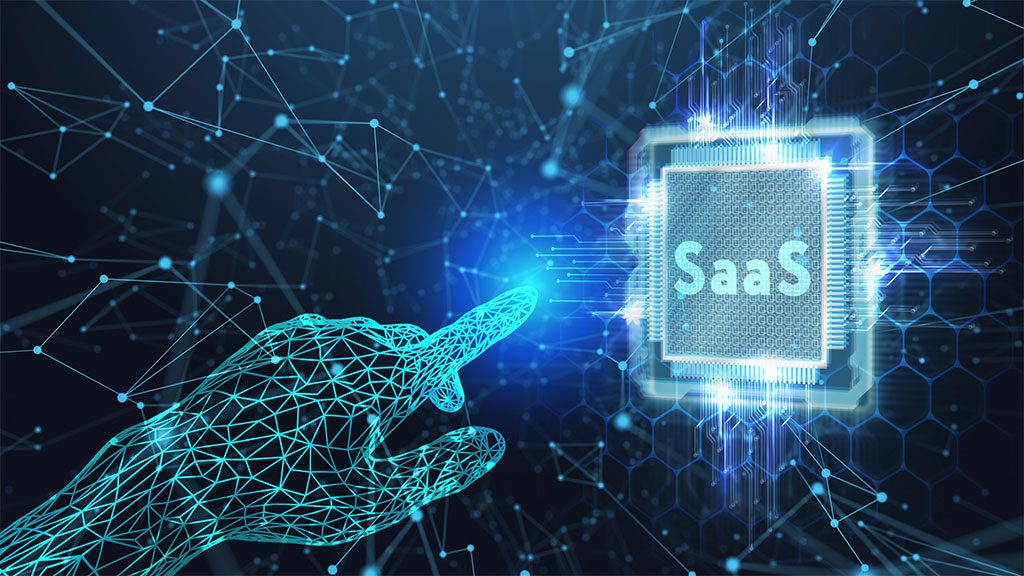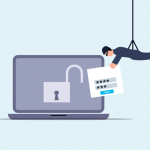
We all know what software is. Your operating system (OS) is software. There was a time when you had to go to a computer store, buy the software in a box, and then physically install it in your computer. This methodology is still with us, but it has been dwindling for many years. These days you can safely purchase and download software online and install it straight into your computer – or you can use SaaS.
What is SaaS and what does IT do?
SaaS (Software as a Service) is still software, but it is obtained from a cloud host on a subscription basis. has revolutionized the way businesses operate. It offers convenience, scalability, and efficiency. No more dragging software from one device to another. Everyone can collaborate easily in the cloud.
But alongside its benefits, SaaS brings with it potential threats. When software and data are online, they’re more vulnerable to attacks. One of the latest threats to move from endpoint devices to the cloud is ransomware.
Ransomware has been around attacking computers, servers, and mobile devices for a while. But recently there has been an alarming uptick in SaaS ransomware attacks.
Between March and May of 2023, SaaS attacks increased by over 300%. A study in 2022 by Odaseva found that 51% of ransomware attacks targeted SaaS data.
So, let’s take a look at what SaaS ransomware is and the risks it poses. And, most importantly, how you can defend against it.
What is SaaS Ransomware?
SaaS ransomware, AKA cloud ransomware, is malicious code designed to target cloud-based applications and services such as Google Workspace, Microsoft 365, and other cloud collaboration platforms.
The cloud-platform target is what makes this ransomware different, because once the hackers zero in on a vulnerability to exploit, the standard scenario goes into effect: it encrypts your data, locks you out of the system, and demands a ransom in cryptocurrency in exchange for a decryption key.
The risks of SaaS ransomware
These are basically the same risks with any ransomware attack, but they are no less severe because of the target. SaaS ransomware adds a new layer of complexity to the Cybersecurity landscape. It presents several risks to individuals and organizations.
Lost Data: The most immediate risk is the loss of critical data. You lose access to your cloud-based applications and files. This, and being unable to access your network, causes productivity to grind to a halt.
Reputational Damage: A successful SaaS ransomware attack can tarnish an organization's reputation. More so if it is an IT company like IT Support LA. If we couldn’t protect ourselves, customers would have grave concerns about our ability to safeguard their data. This can be ruinous to any brand image.
Financial Impact: DON’T PAY THE RANSOM! Forking over some cryptocurrency is no guarantee you’ll get your data back. These are criminals, after all. It also would encourage attackers to target you again. Furthermore, the cost of downtime and recovery efforts can be substantial.
What are the best defenses against ransomware?
As the saying goes, an ounce of prevention is worth a pound of cure. When it comes to SaaS ransomware, proactive defense is key. Here are some effective strategies to protect your organization against these threats.
Security Awareness Training
Start by educating your employees about the risks of SaaS ransomware. Include how it spreads through phishing emails, malicious links, or breached accounts. Teach them to recognize suspicious activities and report any unusual incidents immediately. Ongoing Security Awareness Training is not a luxury, it’s a MUST.
Initiate Multi-Factor Authentication (MFA)
Not using Multi-Factor Authentication is a huge mistake. It is an essential layer of security, requiring users to provide an extra form of authentication to access accounts. This is often a one-time code sent to their mobile device. Enabling MFA reduces the risk of unauthorized access. This is true, even if a hacker compromises an account's login credentials.
Backups, Backups, Backups!
This is where IT Support LA sounds like a broken record. It is up to the customer to pay to set up a regular backup system. If they choose to pinch that particular penny, we will not typically offer them our Managed IT Services, but rather a renewable block of service time that is not all-inclusive.
The reasoning is this: If a client refuses to institute backups and an employee there clicks a malicious link and releases ransomware into the network, then it would be costly and time-consuming to forensically try to salvage data – and the results are typically far from complete. Then we run the risk of the client presuming we failed (when we didn’t) and sharing that misinformation with others. It’s just not worth it.
Frequently backing up your SaaS data is crucial. In the event of a ransomware attack, you still have your data, so the affected devices can easily be wiped and the data restored. Having up-to-date backups ensures that you can restore your files. If you take this precaution, you never even have to consider paying a ransom.
Initiate Access Management
Apply the principle of least privilege. Limit user permissions to only the necessary functions. This means giving users the lowest privilege needed for their job. Doing this, you reduce the potential damage an attacker can do if they gain access.
Keep Software Up to Date
This is a given: make sure that you keep all software (SaaS applications, operating systems, etc.) up to date. They should have the latest security patches installed. Regular updates close known vulnerabilities and strengthen your defense.
Deploy Advanced Security Solutions
Consider using third-party security solutions that specialize in protecting SaaS environments. These solutions can provide many benefits. Including:
Real-time threat detection
Data loss prevention
And other advanced security features
Track Account Activity
Initiate robust monitoring of user activity and network traffic. Suspicious behavior can be an early indicator of an attack. One example to watch for is several failed login attempts. Another is access from unusual locations.
Develop an Incident Response Plan (IRP)
This is the smallest of the ‘Russian Doll’ of plans. It is part of your Backup and Disaster Recovery plan, which is part of the larger Business Continuity plan. Prepare and practice an incident response plan. It should outline the steps to take in the event of a ransomware attack. A well-coordinated response can mitigate the impact of an incident. It can also aid in faster recovery. The sooner your team can respond, the faster business gets back to normal.
Frequently Asked Questions
How do you create a backup and disaster recovery plan?
Unless you are a solo operator, it is best to have a qualified IT company or a firm that provides comprehensive Managed IT Services set these up for you. As a one-person operation who wants to do this on your own, download the Cyber Essentials Starter Kit provided free by the Federal Cybersecurity & Infrastructure Security Agency (CISO), but most likely the simplest way to back up your data is with an external hard drive that is ONLY connected to the computer when the backups are performed. If a virus or ransomware infects your computer, it will find its way to your external hard drive if it is connected.
How often should you conduct security awareness training programs?
It is recommended to provide ongoing training every 4 to 6 months. Users need regular reinforcement and updates on the latest scam trends. Your IT team, whether an internal department or outsourced IT services, should have some level of involvement in these training sessions.
Where do companies backup their data?
Considering only the most modern and reliable locations for data backup, these are the basic three levels of backup:
Local Backup
Cloud Backup
Cloud to Cloud Backup
Is 2FA or MFA more secure?
Multi-factor authentication (MFA) is more secure than two-factor authentication (2FA) These two terms are often used interchangeably, but they're not quite the same thing. 2FA requires exactly two authentication types to unlock something. MFA requires a minimum of three forms of authentication.
How secure is your network?
As a reputable member of the IT Support Los Angeles community since 2002, IT Support LA offers a FREE, no-risk network and security assessment. It is a non-intrusive scan that allows us to deliver a comprehensive report that is yours to keep. No strings, and no obligation to ever use our Managed IT Services.
The best defenses are expert Cybersecurity to protect your data from theft, and a top-notch Managed Services Provider to ensure continued reliability and defenses against newly emerging threats.
With our 100% Money Back Guarantee in writing, we offer a risk-free way for prospective clients to try us out. Because we do not require a ‘hard’ contract, our clients can fire us at any time with 30 days’ notice. We have to be good.
Among the Managed IT services we provide:
IT HelpDesk Service
Onsite IT Support
Cybersecurity
Cloud migration and management
Email migration services
Backup and disaster recovery
VoIP phone systems
IT disposition and recycling
Office moves
White label services (IT to IT)
IT Support LA is an award-winning Managed Services Provider (MSP):
o 3 Years awarded Best IT by the Small Business Expo
o Awarded 2nd best company of any type in the US by the Small Business Expo SB100
o Awarded Best IT Support in California by Channel Futures
o Winner of Best IT in Los Angeles by Channel Futures
o Listed as one of the world’s Top 501 MSPs by CRN and in the top 250 in the ‘Pioneer’ listing
o 4 years listed as one of the Top 501 MSPs in the World by Channel Futures
o Listed as #21 MSP in the World in Channel Futures NextGen 101
o Globee 2021 Bronze Award winner for Chief Technology Officer of the Year
o Globee 2022 Gold Award winner for Chief Technology Officer of the Year
o Named one of 2022’s 50 ‘Best’ businesses in California by UpCity
o Named one of 2023’s 50 ‘Best’ businesses in California by UpCity
o Named Best of IT Services winner by UpCity
o Winner of Local Excellence Award for 2021, 2022 and 2023 by UpCity
o Named Best of Cloud Consulting winner by UpCity
o Certified as Top Managed Services Provider and Cybersecurity Pro by UpCity
o Named Best IT Services in Los Angeles by Expertise.com.
Don’t Leave Your Cloud Data Unprotected!
SaaS ransomware is a significant Cybersecurity concern. The best defense is a good offense. Do you need help putting one together?
Our team can help you stay ahead of the cyber threats that lurk in the digital world. Give us a call today to schedule a chat and take advantage of our FREE network and security assessment.
818-805-0909


